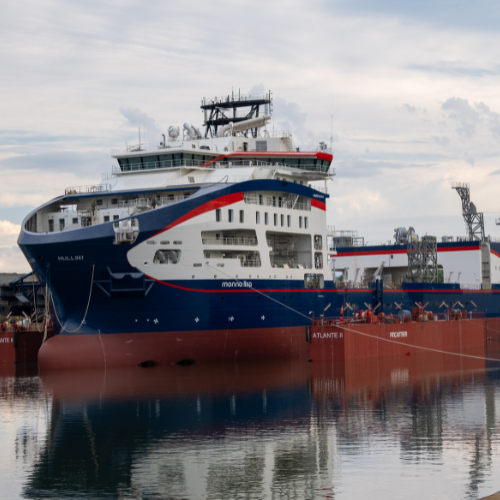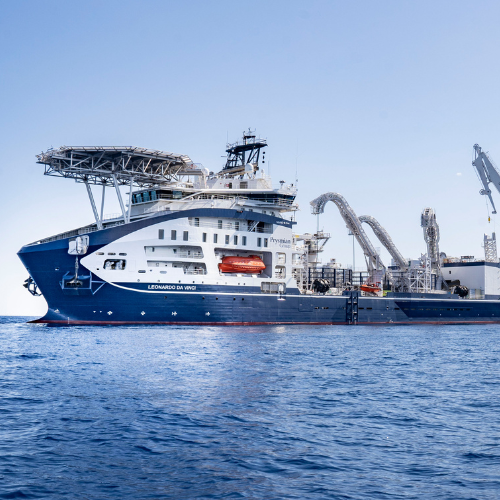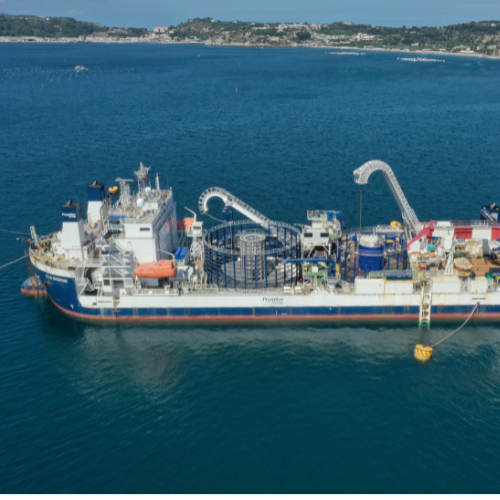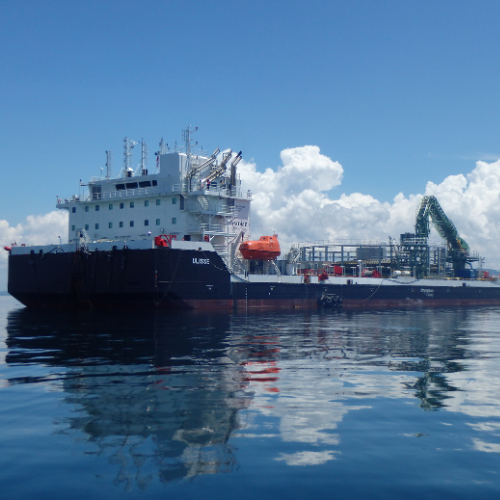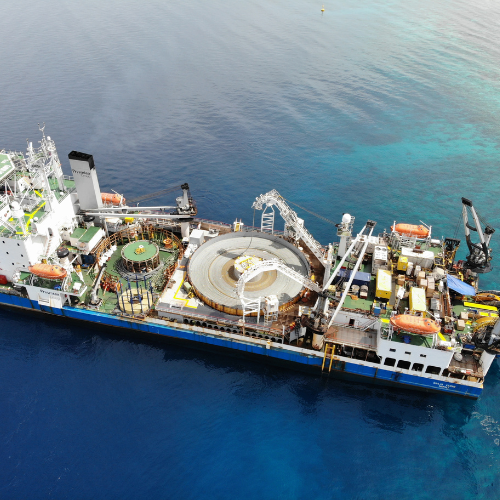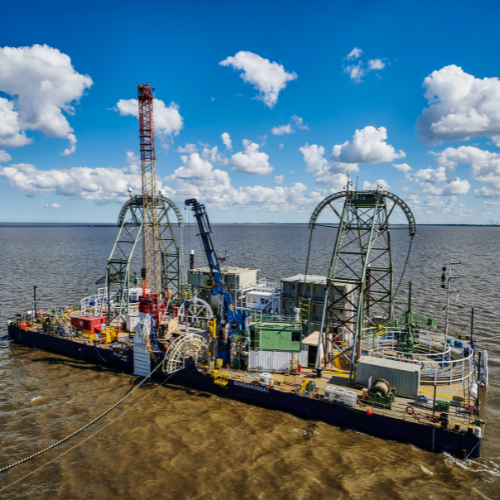Prysmian to increase its fleet to eight vessels investing about €350 million in two new cable-laying assets, including its biggest ever in terms of size and capacity, enabling the Company to meet the growing demand for its cable systems and offer the most flexible and comprehensive installation solutions to support the transition to more renewable power supply.
Prysmian increases its cable installation capacity and capabilities
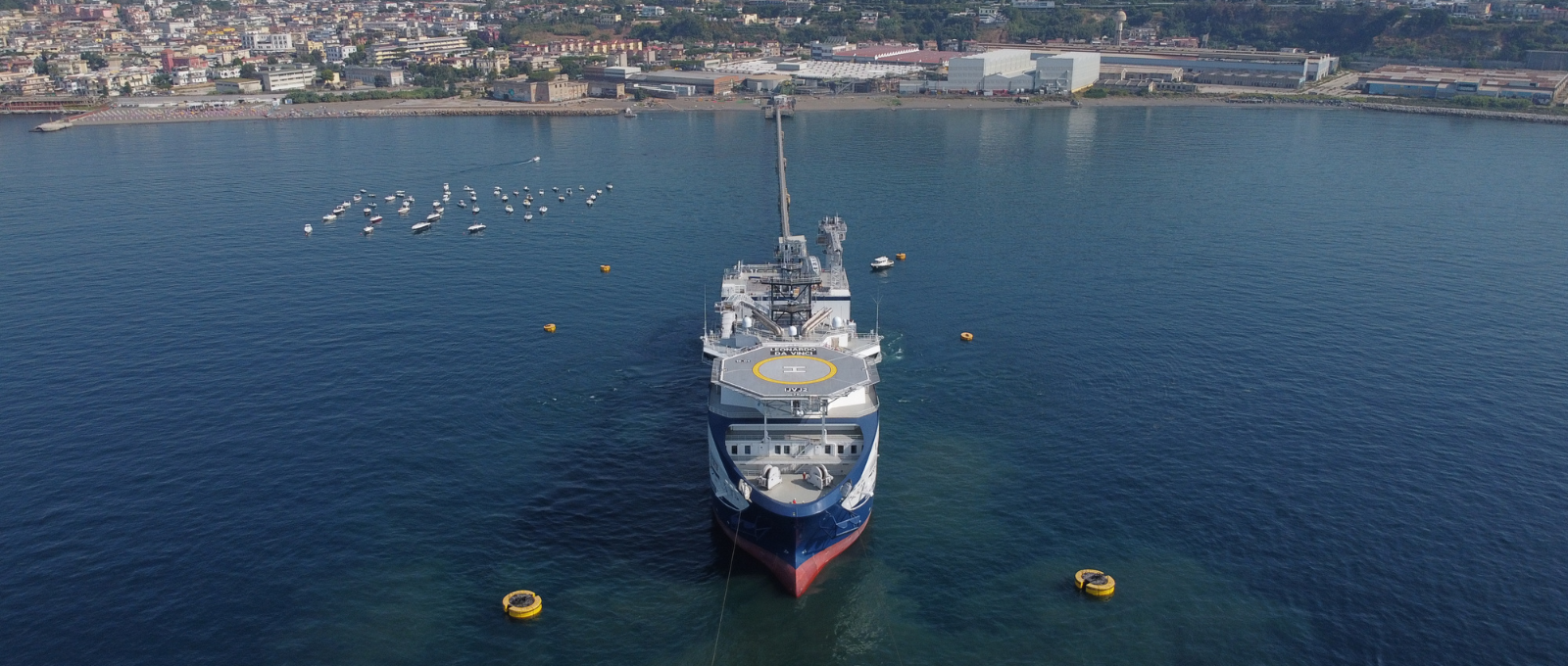
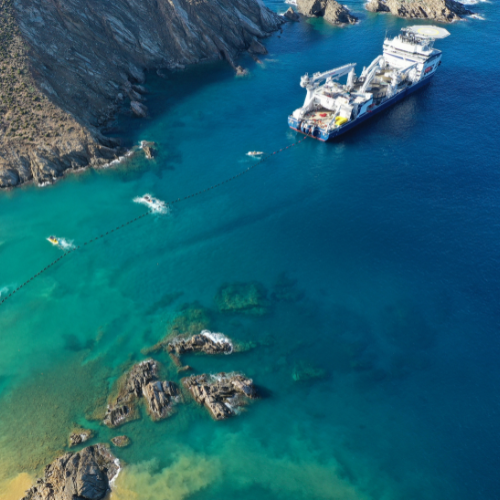
The larger vessel will be an evolution of Prysmian’s state-of-the-art Leonardo da Vinci and its Monna Lisa sister ship currently under construction. The other will be designed specifically for shallow waters, where demand for cable-laying projects is growing. Both ships will eventually have three rotating carousels to handle and store power cables. This will enable enhanced solutions to meet the need in several new projects to lay three batches of cables at the same time, including the metallic return which works as a backup in case of any problems for the main two direct current (DC) cables.

Prysmian is preparing for two things: one is the natural growth in the market, with a huge number of projects being signed for the years to come. The other is to move in the direction of the new projects that will run in Northern Europe that require three power cables laid simultaneously in a bundle. The company has seen a surge in orders for its cables to connect renewable projects such as offshore wind farms and to build power interconnectors between countries to prepare for a shift to more reliance on sustainable energy as governments and businesses pursue efforts to reduce greenhouse gas emissions. Utilities are scrambling to lay the longer and more robust electricity connections needed to carry renewable energy from where it is generated to where it is consumed. Cables are also becoming more technological - so Prysmian needs vessels that have more capacity and are structurally adapted to stay on top of an ever-changing market.
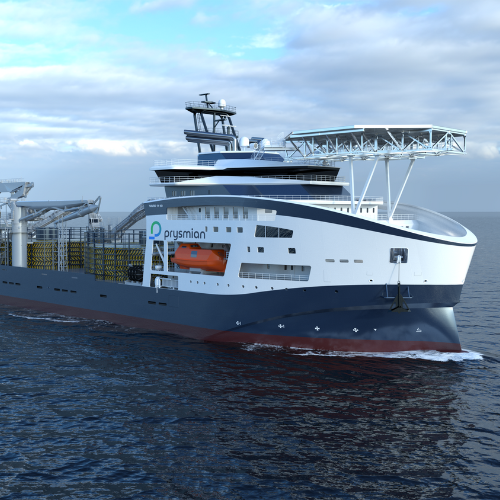
Prysmian’s first new vessel is planned for the deeper water sections of projects and is currently in the design stage. It is set to be more than 190 meters long, compared to the 171-meter length of the Monna Lisa and Leonardo da Vinci, and will have a total cable capacity of about 19,000 tons, making it one of the highest cable loading capacity vessels in the market. The steel cutting for this ship has been successfully performed at the beginning of September in Tulcea, Romania, where the vessel is being built initially. The keel laying ceremony will follow in mid-October. The second part of the construction will take place in Norway and the vessel is due to be operational by 2027. As for the Leonardo da Vinci and Monna Lisa, this ship will be built by the VARD Group (a subsidiary of the Fincantieri Group), one of the world leaders in the design and construction of specialized vessels for the offshore market.

This vessel is the bigger sister of the Monna Lisa, and it can store more cable on board Prysmian installation team have increased the size of the generators and of the thrusters, in order to balance the increase in dimensions of the vessel. Despite its larger size, it is expected to have the same or higher speed and performance. Its enhanced ability to lay three power cables and two fiber optic cables at the same time will surpass that of the Monna Lisa. The company is also aiming to achieve a greener footprint with this new ship through new waste handling systems.
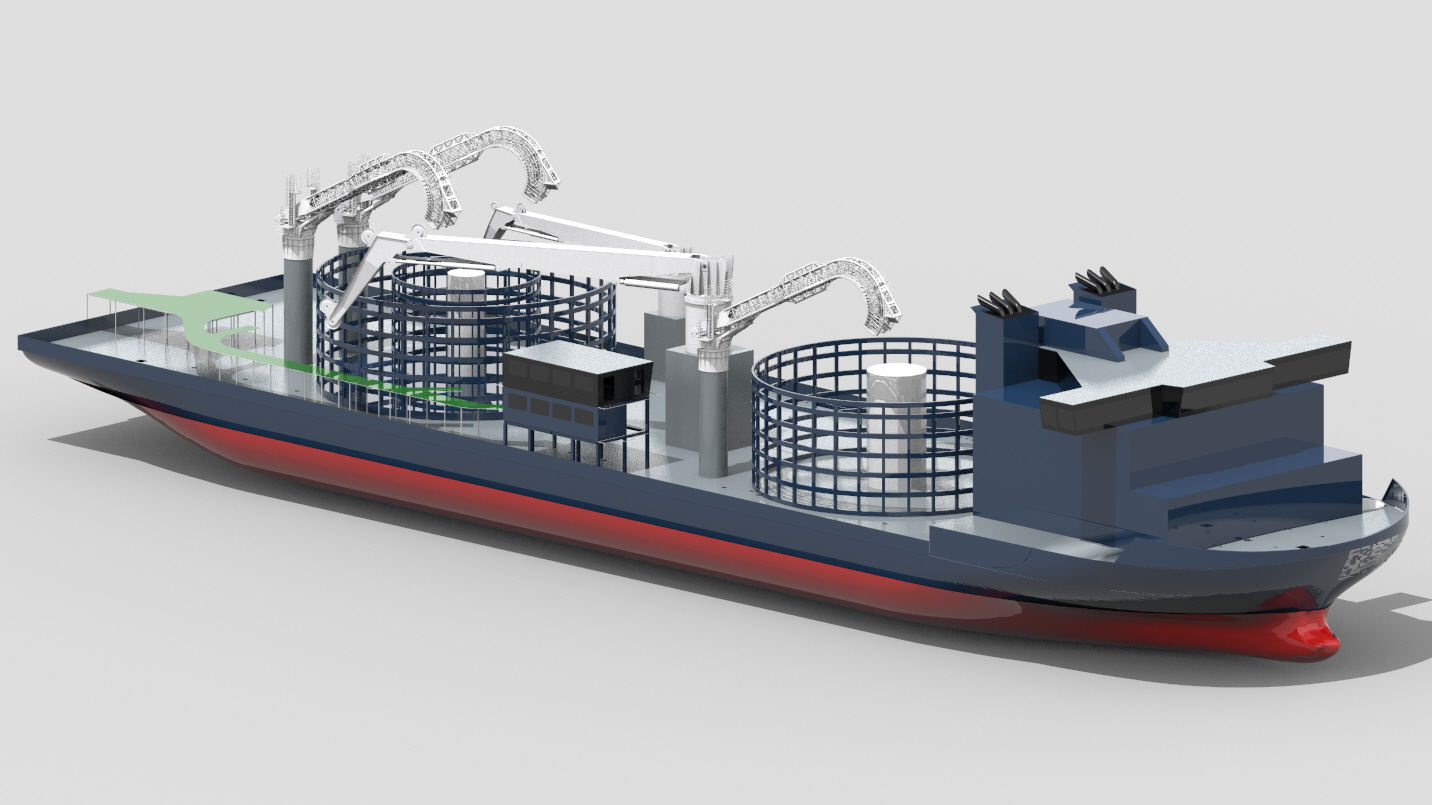
The second vessel is planned to cover the need for greater capacity in shallow waters strengthening even more the turnkey approach of the Company able to install submarine cables. Prysmian’s other ship that can operate in these areas, the Ulisse, is no longer enough to carry out all the required work for shallow water operations in coming years on its own. The company has purchased a vessel which is suitable for a conversion to meet its technical requirements. It has been delivered to Prysmian on 12 August in its original design as a cargo ship and will start soon the conversion into a cable layer. The first modifications will be done this autumn and in 2025 the 167-meter vessel is scheduled to sail to Europe for the final mobilization activities. The ship will later undergo further modifications to equip it with three rotating carousels, in preparation for the large Northern European projects scheduled from 2027.

This shallow water cable-laying vessel is an evolution of the Ulisse vessel, with differences that enhance the vessel operability. It will have increased capacity in shallow water compared to Ulisse and, being self-propelled can also be used as a freighter at need.
Prysmian already has a fleet of six cutting-edge vessels: Giulio Verne, its former flagship with a track record of about 35 years of cable installation projects; Cable Enterprise, a versatile DP2 vessel, mainly used for installation of offshore wind farm export cables; Ulisse, a barge for shallow-water installations; Barbarossa, a small barge, recently added to the fleet and specifically designed for operations in very shallow water and intertidal zones; Leonardo da Vinci, the most advanced cable laying vessel in the world, and the sister vessel Monna Lisa, still under construction and ready to operate in early 2025.





